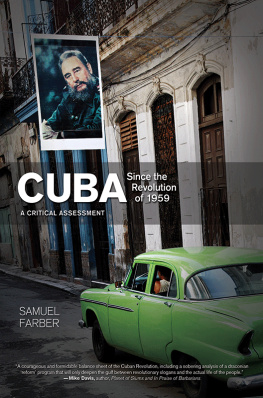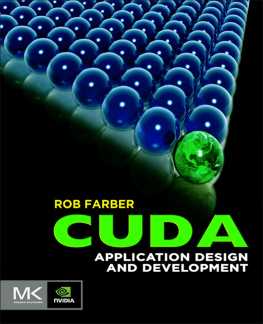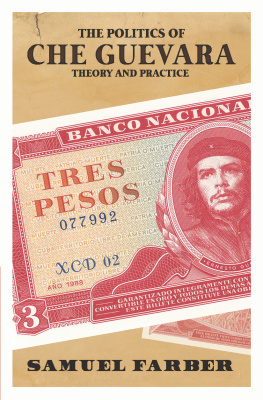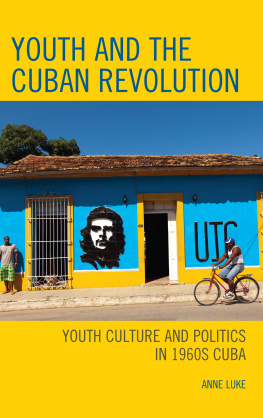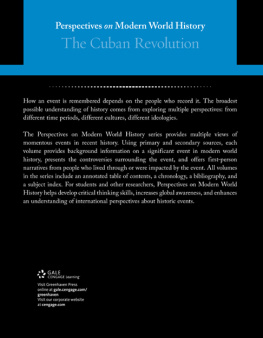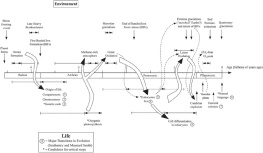Praise for Cuba since the Revolution of 1959
A courageous and formidable balance sheet of the Cuban Revolution, including a sobering analysis of a draconian reform program that will only deepen the gulf between revolutionary slogans and the actual life of the people.
Mike Davis, professor, University of California, Riverside; author, Planet of Slums and In Praise of Barbarians
My political roots are in the classical Marxist tradition that preceded Stalinism in the Soviet Union, writes Samuel Farber at the beginning of his book. Based on that political and theoretical outlook, opposed as much to neoliberal thought as to the perversions of Stalinist and postmodern communist statism, Farber sets out to critically explore the course followed by the society, government, and power structures that emerged from the Cuban Revolution of 1959. His field of research covers the irreducible hostility of the US establishment, Cubas historical inheritance, and the alternatives and decisions of its leaders in the last decades, up to and including the problems and challenges they face in these times. His study ends with a careful analysis of the premises and reform proposals currently being discussed in Cuba. A necessary and suggestive reading for all of those concerned with Cubas future and with the threat posed by the imperial power over the entire Caribbean region.
Adolfo Gilly, professor, history and political science, School of Social and Political Sciences, Universidad Nacional Autnoma de Mxico; author, The Mexican Revolution
This important, very well-written, and quite interesting book, evaluates the fifty-two years of the Cuban Revolution under a classical Marxist (pre-Stalinist) viewpoint. Samuel Farber doesnt pretend to be impartial: he advocates a transition toward a revolutionary, participatory, socialist democracy, based on majority rule, civil rights, and liberties. And yet his book is thoroughly, painstakingly documented, mostly with Cuban primary sources and a profound knowledge of the secondary literature. He evaluates, with surprising insights, Cubas performance on national sovereignty, political democracy, economic growth, social welfare, race, gender, and the stand of domestic and external dissidents and critics. It is up-to-date, including an examination of the guidelines for the Sixth Party Congress, and ends with a good balance sheet and Marx and Engels views. Expect a strong reaction both from the right and the left. Dont miss it!
Carmelo Mesa-Lago, Distinguished Service Professor Emeritus of Economics and Latin American Studies, University of Pittsburgh
Samuel Farbers work on Cuba has long championed revolutionary democratic socialism from below. His latest book, a sophisticated and nuanced historical synthesis of the Cuban Revolution since 1959, provides an indispensable guide to the politics of a tiny island state that helped determine the history of Latin America and the dynamics of the Cold War in the latter half of the twentieth century. With a magisterial grasp of historical detail, and an incisive analytical eye, Farber offers an unparalleled cartography of the ideological debates and political outcomes of Cubas economic development, foreign policy, socio-cultural fluctuations in race and gender, and working-class and peasant realities under the rule of the Castro brothers. While acknowledging achievements of the revolutionary process in education and health, and defending Cuban sovereignty against imperial intervention, Farber shatters many of the idyllic myths propagated by left-wing apologists for the regimes authoritarianism. The geriatric transition from Fidel to Ral seems to promise a strategic shift toward a Cuban version of Sino-Vietnamese, state-led capitalism. A revolutionary democratic alternative, Farber shows, will only be possible through socialist resistance from below.
Jeffery R. Webber, Queen Mary, University of London; author, From Rebellion to Reform in Bolivia: Class Struggle, Indigenous Liberation and the Politics of Evo Morales
Farbers comprehensive and well-written assessment of Cubas experience since 1959 is rooted in history, informed by the comparative sociology of communist regimes, and rich in insightful and feisty analysis.
Jorge I. Domnguez, professor of Mexican and Latin American politics and economics, Harvard University
Copyright 2011 by Samuel Farber
Published in 2011 by Haymarket Books
PO Box 180165
Chicago, IL 60618
www.haymarketbooks.org
7735837884
ISBN: 978-1-60846-166-0
Trade distribution:
In the US, Consortium Book Sales and Distribution, www.cbsd.com
In Canada, Publishers Group Canada, www.pgcbooks.ca
In the UK, Turnaround Publisher Services, www.turnaround-uk.com
In Australia, Palgrave Macmillan, www.palgravemacmillan.com.au
All other countries, Publishers Group Worldwide, www.pgw.com
Cover design by Eric Ruder
Cover image of a portrait of Fidel Castro hanging from the balcony of an apartment in Havana by Rodrigo Abd, Associated Press.
Published with the generous support of Lannan Foundation and the Wallace Global Fund.
Library of Congress cataloging-in-publication data is available.
10 9 8 7 6 5 4 3 2 1
Selected Chronology
Major Events in Cuban History, 19332010
August 1933January 1934: Revolutionary overthrow of dictatorship of Gerardo Machado. United States refuses to recognize nationalist government of Ramn Grau San Martn. Army strongman Fulgencio Batista rises to power with US support.
1934: Platt Amendment is officially overturned, but the United States retains a naval base in Guantnamo Bay. Reciprocal Trade Agreement between Cuba and the United States is signed, reinforcing Cubas sugar monoculture and lack of industrial diversification.
19341940: Batista controls Cuba through puppet governments.
1940: New Cuban Constitution is established.
19401944: Batista rules Cuba as constitutional president.
19441948: Batistas candidate (supported by the Cuban Communists) loses the election to Ramn Grau San Martn, and elected president serves his full term.
19481952: Carlos Pro Socarrs, the candidate of Grau San Martns party, is elected but is unable to finish four-year term.
March 10, 1952: Retired general Fulgencio Batista overthrows Pros government through a military coup, and constitutional government comes to an end.
July 26, 1953: Attack on Moncada barracks fails and the Castro brothers and followers are captured.
May 15, 1955: Batista decrees political amnesty, and the Castro brothers, the rest of the Moncada attackers, and other political prisoners are released from prison.
December 2, 1956: The Granma lands in Oriente Province, bringing Fidel Castro and eighty-one of his fellow anti-Batista fighters from Mexico.
March 13, 1957: Assault on the Presidential Palace by Directorio Revolucionario fails.
April 9, 1958: General strike fails. After the defeat of the general strike, Fidel Castro turns to greater emphasis on guerrilla strategy.
January 1, 1959: Dictatorship of Fulgencio Batista is overthrown and rebels take over.
May 1959: Agrarian Reform Law is enacted. Major growth of US opposition to Cuban government
November 1959: Tenth National Labor Congress. Fidel Castro directly intervenes to press for unity slate with pro-Communist delegates.
February 4, 1960: Soviet leader Anastas Mikoyan arrives in Cuba and signs trade treaty with Cuban government.
March 1960: US government adopts systematic covert action plans to overthrow Cuban government. Plans had been in preparation since late 1959.
May 1960: Fidel Castro achieves complete control of Cuban press and mass media. The USSR and Cuba resume full diplomatic relations.
JuneJuly 1960: US-owned oil companies refuse to process Soviet oil and are then expropriated by Cuban government. Eisenhower abrogates Cuban sugar quota.
Next page
